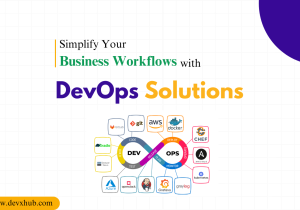Blog - The Top Front-end Frameworks for Web Development in 2024
In the landscape of web development, choosing the appropriate front-end framework holds paramount importance. As we navigate through 2024, the efficacy of web applications hinges significantly upon the selection of the right front-end framework, amidst a plethora of options boasting innovative features. This article endeavors to dissect and analyze the foremost front-end frameworks tailored for web development in the current year.
Front-end frameworks have transformed the paradigm of designing and executing user interfaces, offering a streamlined and organized methodology for crafting websites. This evolution stems from the escalating complexity of web applications, marked by an influx of mobile functionalities and dynamic features.
In the nascent stages of the internet, web pages remained relatively rudimentary, characterized by static HTML structures with limited interactivity. However, as the demand for real-time, interactive web experiences burgeoned, developers encountered challenges in managing the intricacies of front-end codebases.
Early front-end solutions such as jQuery sought to address these challenges by facilitating DOM manipulations and introducing more efficient mechanisms for controlling web animations. Nevertheless, as web applications grew in sophistication, there arose a pressing need for a structured and scalable approach to development.
Developers today have different language tools, such as HTML, CSS and Javascript, to design more interactive user interfaces.
The incorporation of such tools helps developers come up with robust and useful applications that meet the requirements of users in 2024 and beyond.
Exploring Front-end Frameworks
Front-end frameworks serve as indispensable tools in web development, simplifying and organizing the intricate process with their robust features.
Simplified Development:
These frameworks provide a structured approach, offering developers reusable structures, design patterns, and code blocks. This streamlines the creation of complex user interfaces, promoting efficiency and consistency.
Modularity:
Front-end frameworks excel in promoting modularity, allowing developers to break down large interfaces into smaller, reusable components. This not only facilitates collaborative development but also enhances scalability and maintenance.
Efficiency:
By instilling a structured architecture, front-end frameworks ensure a smooth flow throughout the web application interface. This enhances aesthetics, navigation, and ultimately, user engagement, contributing to a more meaningful browsing experience.
Responsive Design:
Front-end frameworks play a crucial role in achieving responsive design, facilitating cross-device compatibility. Developers can leverage tools and options within these frameworks to design mobile-optimized web applications, catering to the diverse needs of users accessing internet applications on various devices.
Community Support and Documentation:
The vibrant communities surrounding front-end frameworks provide invaluable resources, documentation, and third-party libraries. This collaborative ecosystem empowers developers to overcome challenges effectively and innovate with confidence.
In the realm of front-end development, JavaScript emerges as the cornerstone language tool. Prominent frameworks like React, Vue.js, and Svelte are testaments to JavaScript’s widespread adoption, offering powerful solutions for crafting dynamic and engaging web applications. Leveraging these frameworks not only ensures efficient development but also enriches the user experience, driving satisfaction and meaningful interactions.
Essential Considerations for Front-end Frameworks in 2024
In the fast-evolving landscape of web development, 2024 promises to continue the trend of significant technological advancements. Entrepreneurs and developers alike must carefully deliberate on selecting the right front-end framework, a decision pivotal to the success and adoption of their projects.
Here, we delve into the key factors essential for choosing the optimal front-end framework in 2024:
Tailored Project Requirements:
Each web development venture comes with its distinct requirements and challenges. It’s imperative to align the chosen front-end framework with the specific needs of the project, be it a small-scale portfolio website, dynamic e-commerce platform, or expansive enterprise application. The selected framework must possess the requisite functionality, scalability options, and flexibility to effectively achieve project objectives.
Productivity and Efficiency:
A well-chosen framework enhances developer productivity by providing a structured and supportive environment for application development. Prioritizing frameworks with comprehensive documentation, robust community support, and a rich ecosystem of tools and libraries can significantly streamline development processes, saving time and reducing errors. Leveraging pre-built components and functional designs empowers developers to focus on implementing unique functionality and solving project-specific challenges.
Scalability and Performance:
Scalability is paramount in web application development, particularly as applications expand and attract larger user bases. While outsourcing to app developers in India is a common practice for achieving optimal performance, selecting a framework with inherent scalability features is crucial. Frameworks should be capable of handling increased traffic and data loads seamlessly. Additionally, prioritizing performance optimization elements within frameworks ensures efficient rendering and resource utilization, ultimately delivering a seamless user experience with faster loading times.
Community Support and Updates:
An active and engaged community is invaluable for any front-end framework. Community support provides access to a wealth of resources, tutorials, and discussions, facilitating ongoing learning and problem-solving for developers. Furthermore, frameworks that receive regular updates demonstrate a commitment to sustainability and responsiveness to evolving industry standards. Opting for frameworks backed by vibrant communities and dedicated development teams ensures long-term support and adaptability, mitigating potential future challenges.
Cost-Efficiency and Resource Optimization:
The choice of a front-end framework profoundly influences budget allocation and resource management in web development endeavors. Opting for a framework that aligns with the proficiency of the development team can curtail training expenses and expedite project timelines. Moreover, frameworks equipped with pre-built optimization and debugging tools enhance resource utilization, thereby impacting project budgets and schedules positively.
Seamless Integration:
Successful project development hinges on the flexibility of the chosen framework to seamlessly integrate with external resources. Access to diverse third-party libraries catering to tasks like DOM manipulation, data processing, and rich-text editing is essential. The framework should adeptly manage intricate integration processes, support multiple libraries and tools, and offer clear documentation and support for streamlined integration procedures without compromising stability or performance.
Mobile Development Capabilities:
In the era of digitalization, mobile app development stands as a critical aspect of business success. Selecting a front-end framework with robust support for mobile development is paramount. Such frameworks empower businesses to craft cost-effective apps that operate seamlessly across various platforms, reducing production costs and time-to-market. Leveraging the right front-end frameworks enables businesses to stay competitive and adapt to evolving customer needs efficiently.
Popularity and Community Support:
The benefits of opting for a widely adopted framework are manifold. It ensures access to a vast network of developers well-versed in its usage and a plethora of third-party tools and resources for support and guidance. Additionally, popular frameworks facilitate ease of finding substitutes or additional developers when needed. Overall, embracing a commonly employed front-end framework proves to be cost-effective and resource-efficient in the long run.
7 Leading Front-end Frameworks for Web Development in India in 2024
When considering front-end frameworks for your next web development project in 2024, several options stand out for their efficiency and suitability across various project requirements. Here are seven top picks:
React
- React, a JavaScript library, remains a powerhouse in front-end web development. Its component-based architecture facilitates scalable and interactive user interfaces. With features like virtual DOM for performance optimization and one-way data flow for simplified state management, React is highly versatile and widely adopted. Its flexibility and compatibility with other frameworks make it a top choice for developers across domains.
Svelte
- Svelte introduces a novel approach by compiling components into efficient vanilla JavaScript during the build process. This strategy streamlines runtime performance and reduces bundle sizes, making it ideal for demanding applications like e-commerce websites. Despite being relatively new, Svelte has gained traction for its minimal boilerplate code and ease of learning.
Vue.js
- Vue.js offers simplicity and seamless integration, catering to both small-scale projects and large applications. With its reactive data binding and intuitive syntax, Vue.js simplifies development while offering flexibility and efficiency. Clear documentation and essential tooling further enhance its appeal to developers.
Solid.js
- Solid.js is a declarative JavaScript library focused on building user interfaces with deep reactivity and performance optimization. By compiling templates to real DOM nodes, Solid.js achieves fine-grained reactivity without relying on a virtual DOM. It supports various state management patterns and is suitable for projects requiring high-resolution reactivity.
Qwik
- Qwik distinguishes itself with instant loading capabilities, particularly on mobile devices. By delaying the download and execution of JavaScript until necessary, Qwik minimizes startup time and enhances user experience. Its reusability feature ensures seamless execution across server and browser, eliminating data duplication issues.
Preact
- Preact is a lightweight alternative to React, offering similar features with enhanced performance and smaller bundle sizes. Suited for smaller to moderately-sized applications, Preact excels in environments with limited resources while maintaining compatibility with React’s API.
Angular
- Angular, backed by Google, remains a dependable choice for complex and large-scale applications. Its modular structure allows selective feature utilization, while features like two-way data binding and dependency injection streamline development. Widely used in enterprise-level projects, Angular’s backward compatibility ensures smooth transitions while embracing modern web development trends.
Each of these frameworks offers unique strengths and capabilities, catering to diverse project needs and developer preferences in 2024.
Conclusion
Choosing a front-end framework should always revolve around addressing specific and individual needs. Some teams may opt for familiarity with a certain framework, while others prioritize alignment with project requirements.
In 2024, these frameworks are anticipated to continue evolving with updates and new features aimed at enhancing performance. If you’re still uncertain about which front-end framework to choose, consider consulting DEVxHUB, a leading software development company in Bangladesh. Their expertise can help analyze your project requirements thoroughly and guide you towards selecting the most suitable framework.
Related Posts
Categories
- App Development (2)
- Design (2)
- DEVxHUB (30)
- Digital Marketing (2)
- Guide (24)
- It Bangladesh (1)
- Logo design (1)
- Operating system (1)
- Personal Improvement (14)
- Planning (4)
- Project management (3)
- Social media (2)
- Software Development (5)
- Software Quality Assurance (8)
- Startups (1)
- Team work (1)
- UI UX (1)
- Web Development (6)
Main Tags
- 2024
- Android
- app development
- bangladesh
- content writing
- design
- devxhub
- Digital marketing
- Guide
- IOS
- It
- logo design
- Operating system
- Personal Improvement
- planning
- project management
- social media
- Software Development
- Software Quality Assurance
- software testing
- software testing types
- Startups
- Success
- team
- UI UX
- UI UX design
- VR
- Web Development















